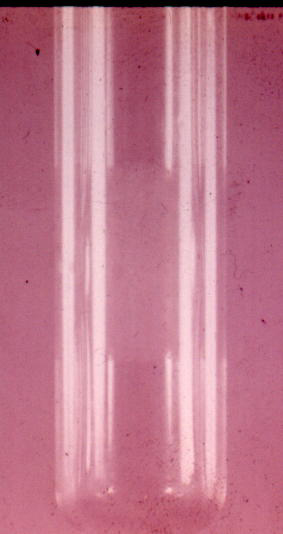The coagulase test is used to differentiate the potentially pathogenic species Staphylococcus aureus from the usually non-pathogenic species Staphylococcus epidermidis. The presence of coagulase results in the formation of a clot in a tube of citrated platelet-rich plasma (~ >150 x 106
platelets/cc plasma). The citrate is an anticoagulant that is added to avoid autoclotting.
Procedure: Add a generous loopful of the organism to be tested to a tube of citrated rabbit plasma. Thoroughly homogenize the inoculum with the loop and incubate the tube at 37o C for one to four hours. Examine the tube at 30 minute to hourly intervals for the first couple of hours for the presence of a clot by tipping the tube gently on its side. A test that shows any degree of clotting within 24 hours is considered coagulase positive.
Reincubate the tube overnight to see if the clot subsequently lyses. In strains that produce fibrinolysin, the clot will be slowly digested. This illustrates the importance of reading the coagulase results within 24 hours. Thereafter, the lack of clotting could be a false negative reaction with a coagulase-positive strain.
Designed & Maintained by David M. Rollins
Copyright © 2000, D.M. Rollins and S.W. Joseph
Revised: August 2000
URL: http://life.umd










No comments:
Post a Comment